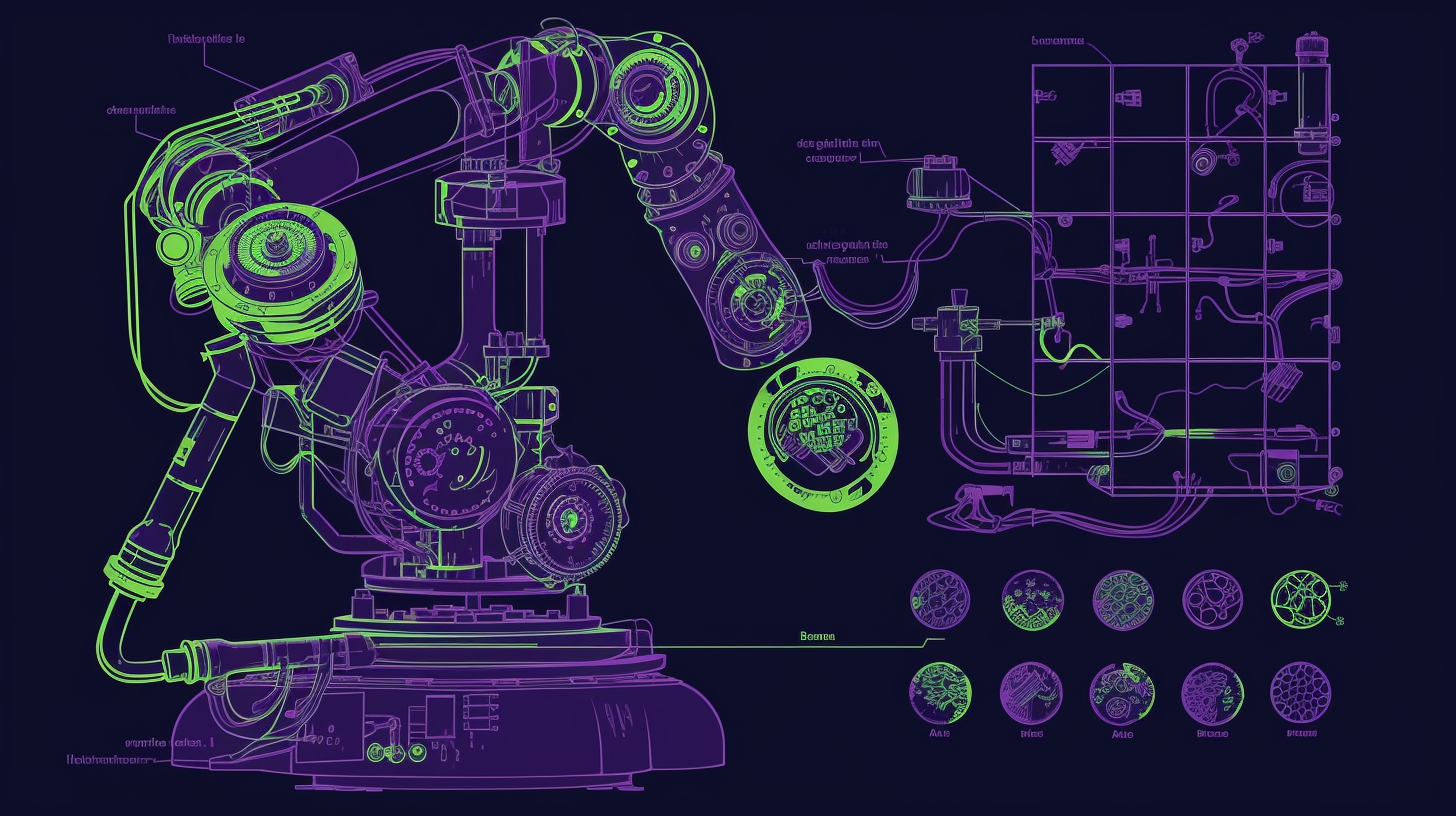Technology Analyst
Technology Analyst: A Comprehensive Career Guide
A Technology Analyst plays a crucial role in bridging the gap between business needs and technological solutions. They evaluate technology systems, identify areas for improvement, and recommend strategies to enhance efficiency, productivity, and overall business performance. Think of them as detectives and strategists for an organization's technology landscape, ensuring that the tools and systems in place effectively support the company's goals.
Working as a Technology Analyst can be exciting because it involves constant learning and adaptation in the fast-paced world of tech. You'll often find yourself investigating complex problems, designing innovative solutions, and collaborating with diverse teams. The ability to influence technology decisions that impact an entire organization offers a rewarding sense of contribution and achievement.
Understanding the Technology Analyst Role
What Exactly is a Technology Analyst?
At its core, a Technology Analyst assesses how technology is used within an organization and finds ways to make it better. This involves understanding both the technical aspects of systems (like software applications, hardware infrastructure, and networks) and the business processes they support. They analyze requirements, troubleshoot issues, evaluate potential new technologies, and help implement changes.
Their work often involves translating complex technical concepts into understandable terms for non-technical stakeholders, such as managers or clients. They might research emerging technologies, conduct cost-benefit analyses for proposed solutions, or develop specifications for new systems. The role demands a blend of technical aptitude, analytical thinking, and strong communication skills.
Ultimately, the goal is to ensure technology serves the business effectively and efficiently. This could mean streamlining workflows, reducing costs, improving user experience, or enabling new business capabilities through strategic technology adoption. It's a dynamic role that requires continuous adaptation to technological advancements.
The Evolution of the Role
The role of the Technology Analyst emerged as businesses became increasingly reliant on complex IT systems. Initially focused on mainframe operations and basic data processing, the responsibilities expanded significantly with the advent of personal computers, the internet, and enterprise software. Early analysts often came from computer science or engineering backgrounds, focusing heavily on system functionality.
Over time, the focus shifted towards integrating technology more strategically with business objectives. The rise of data analytics, cloud computing, mobile technology, and digital transformation initiatives broadened the scope further. Analysts now need a deeper understanding of business strategy, user experience, and data interpretation alongside their technical knowledge.
Today, Technology Analysts are vital in navigating digital transformation, cybersecurity challenges, and the integration of cutting-edge technologies like artificial intelligence and machine learning. The role continues to evolve, demanding adaptability and a commitment to lifelong learning to keep pace with rapid technological change.
These books offer perspective on how technology shapes industries and the future, relevant to understanding the evolving landscape Technology Analysts navigate.
Where Do Technology Analysts Work?
Technology Analysts are employed across nearly every industry, as technology is fundamental to modern business operations. Major sectors include finance and banking, where they analyze trading systems, financial modeling software, and regulatory compliance technology. Consulting firms also heavily recruit Technology Analysts to advise clients on technology strategy and implementation.
Healthcare is another significant area, with analysts working on electronic health records (EHR) systems, medical imaging technology, and telehealth platforms. Government agencies, technology companies (both software and hardware), retail, manufacturing, and education institutions also rely on Technology Analysts to optimize their systems and processes.
The specific focus might vary by industry – a finance analyst might concentrate on security and transaction speed, while one in healthcare might focus on data privacy and interoperability. Regardless of the sector, the core function of aligning technology with organizational goals remains consistent.
Core Responsibilities and Daily Tasks
Analyzing Systems and Gathering Requirements
A primary responsibility for Technology Analysts is examining existing technology systems to understand their functionality, limitations, and how well they meet business needs. This involves detailed investigation, mapping workflows, and identifying bottlenecks or inefficiencies. They often use diagrams and modeling techniques to visualize system interactions.
Gathering requirements is another critical task. Analysts work closely with various stakeholders – from end-users to department managers – to understand their needs and translate them into technical specifications. This might involve conducting interviews, facilitating workshops, and administering surveys to ensure all necessary features and functionalities are captured accurately.
Effective requirements gathering prevents scope creep and ensures the final technology solution aligns with user expectations and business objectives. Clear documentation of these requirements serves as a blueprint for development teams or informs the selection process for new software or hardware.
Interpreting Data and Creating Documentation
Technology Analysts frequently work with data generated by systems to identify trends, diagnose problems, or measure performance. This requires skills in data extraction, manipulation, and interpretation. They might use tools like SQL to query databases or visualization software like Tableau to present findings.
Comprehensive documentation is essential. Analysts create various documents, including functional specifications, system diagrams, user manuals, and technical reports. This documentation ensures clarity for developers, testers, and end-users, and serves as a knowledge base for future reference or system maintenance.
Good documentation bridges the understanding gap between technical teams and business users. It needs to be precise, clear, and tailored to its intended audience, whether it's a highly technical specification for engineers or a user-friendly guide for staff.
Communicating with Stakeholders
Technology Analysts act as liaisons between technical teams and business departments. Strong communication skills are therefore non-negotiable. They must be adept at explaining complex technical details in simple terms to non-technical audiences and conveying business needs accurately to developers or engineers.
This involves regular meetings, presentations, and written communication. Analysts often facilitate discussions to resolve conflicts, negotiate priorities, and build consensus among different groups. They need to actively listen to understand diverse perspectives and ensure everyone is aligned on the project goals and progress.
Building relationships and trust with stakeholders is key to successful technology implementation. An analyst who communicates effectively can manage expectations, address concerns proactively, and ensure smoother adoption of new technologies or processes.
Building Your Foundation: Education Pathways
Relevant Undergraduate Degrees
While a specific "Technology Analyst" degree is rare, several undergraduate fields provide a strong foundation. Computer Science programs offer deep technical knowledge of software, hardware, and algorithms. Information Technology (IT) or Information Systems degrees focus more on applying technology within a business context, covering areas like networking, databases, and system administration.
Business-related degrees, particularly those with a focus on analytics, management information systems (MIS), or even finance, can also be excellent starting points. These programs equip students with an understanding of business operations, strategy, and financial principles, which are crucial for aligning technology with organizational goals.
Some universities offer specialized programs like Business Technology Management or Technology Innovation Management. Regardless of the specific major, coursework in programming, database management, systems analysis and design, project management, and business communication is highly beneficial.
You can explore relevant degree programs and foundational knowledge through resources like Computer Science or Business categories on OpenCourser.
Graduate Programs and Specialization
For those seeking deeper expertise or aiming for leadership roles, a master's degree can be advantageous. Options include a Master of Science in Information Systems (MSIS), Information Management (MSIM), Data Science, or even a Master of Business Administration (MBA) with a technology concentration.
Graduate programs often allow for specialization in areas like cybersecurity, data analytics, cloud computing, enterprise architecture, or technology strategy. This advanced education can enhance technical skills, develop strategic thinking, and improve leadership capabilities, making graduates more competitive for senior analyst or management positions.
Researching specific programs is important, as curricula can vary significantly. Look for programs that blend technical depth with business acumen and offer opportunities for hands-on projects or internships relevant to technology analysis.
Industry-Recognized Certifications
Certifications can complement formal education or provide an alternative pathway into the field, especially for career changers. They demonstrate specific knowledge and skills valued by employers. Foundational certifications like CompTIA A+, Network+, or Security+ can be good starting points for understanding IT fundamentals.
More specialized certifications exist depending on the desired focus area. For instance, certifications in business analysis (like CBAP or CCBA from IIBA), project management (like PMP or CAPM from PMI), cloud platforms (AWS Certified Solutions Architect, Microsoft Certified: Azure Fundamentals), or data analytics tools can significantly boost a profile.
While certifications alone may not guarantee a job, they signal commitment to the field and validate expertise in specific domains. Continuously updating certifications or acquiring new ones is also important in the rapidly evolving tech landscape.
Skill Development Through Online Learning
Essential Technical Skills Acquisition
Online learning platforms offer accessible and flexible ways to acquire the technical skills needed for a Technology Analyst role. Foundational skills often include proficiency in database querying languages like SQL, understanding of data modeling, and familiarity with spreadsheet software like Microsoft Excel for data analysis.
Depending on the specific role or industry, knowledge of programming languages such as Python for data analysis or automation can be highly valuable. Familiarity with business intelligence tools (e.g., Tableau, Power BI), Customer Relationship Management (CRM) systems (e.g., Salesforce), and Enterprise Resource Planning (ERP) systems (e.g., SAP) is also frequently required.
Understanding cloud computing concepts (AWS, Azure, GCP) and basic networking principles is increasingly important. Online courses provide structured paths to learn these skills, often with hands-on labs and projects to solidify understanding. Platforms like OpenCourser aggregate thousands of courses, making it easier to find relevant training.
These courses can help build foundational and advanced technical skills relevant to technology analysis and innovation.
Learning Through Projects
Theoretical knowledge is essential, but practical application solidifies skills. Engaging in project-based learning is an effective way to bridge the gap between learning and doing. Many online courses incorporate hands-on projects, allowing learners to apply concepts in realistic scenarios.
Consider undertaking independent projects as well. This could involve analyzing a publicly available dataset, designing a mock system architecture for a hypothetical business problem, or developing a small application to automate a task. Documenting these projects clearly demonstrates initiative and practical ability to potential employers.
Look for opportunities to contribute to open-source projects or participate in data analysis competitions (like those on Kaggle). These experiences provide real-world challenges and allow collaboration with others, further enhancing skills and building a network.
This capstone course emphasizes applying learned concepts through a project, simulating real-world application.
Building a Portfolio
A portfolio is a collection of your work that showcases your skills and experience to potential employers. For Technology Analysts, this can include project documentation (like requirements specifications or system diagrams), data analysis reports, presentations, code samples (if applicable), or case studies of problems you've solved.
Include projects completed during coursework, independent projects, or contributions to real-world initiatives. Clearly describe the problem, your approach, the tools and techniques used, and the outcome or insights gained for each portfolio piece. Tailor your portfolio to highlight skills relevant to the specific type of Technology Analyst role you are targeting.
Hosting your portfolio online (e.g., on a personal website, GitHub, or LinkedIn) makes it easily accessible to recruiters and hiring managers. A well-curated portfolio provides tangible evidence of your capabilities beyond what's listed on a resume, significantly strengthening your job application.
Career Progression and Opportunities
Starting Your Journey: Entry-Level Roles and Internships
Entry into the Technology Analyst field often begins with roles like Junior Analyst, IT Support Specialist, or Business Systems Analyst Trainee. Internships during or after academic studies are highly valuable for gaining practical experience, understanding workplace dynamics, and building professional connections.
These initial roles typically involve supporting senior analysts, assisting with documentation, performing basic data analysis, testing systems, and learning the specific technologies and processes used by the organization. It's a critical period for absorbing knowledge and demonstrating potential.
Focus on mastering foundational skills, asking questions, seeking mentorship, and taking initiative on assigned tasks. Building a strong work ethic and demonstrating eagerness to learn can accelerate progression towards more substantive analyst responsibilities.
Growing Expertise: Mid-Career Specialization
After gaining foundational experience, Technology Analysts often specialize. This might involve focusing on a specific industry (like FinTech or HealthTech), a particular technology domain (like cybersecurity, cloud architecture, data science), or a functional area (like process improvement or enterprise systems).
Mid-career analysts take on more complex projects, lead requirements gathering sessions, manage smaller initiatives, and mentor junior team members. They develop deeper expertise in their chosen area and often become subject matter experts within their organizations.
Continuous learning remains crucial at this stage. Pursuing advanced certifications, attending industry conferences, and staying updated on technology trends are essential for career growth and maintaining relevance. This is often the stage where analysts make significant contributions to technology strategy and implementation.
This course explores digital transformation, a key area for mid-career analysts.
Reaching the Top: Leadership Roles
Experienced Technology Analysts can progress into leadership positions. This might include roles like Senior Technology Analyst, Lead Analyst, IT Manager, Director of Technology, or even Chief Technology Officer (CTO) or Chief Information Officer (CIO) in some organizations.
Leadership roles involve setting technology strategy, managing teams of analysts and technical staff, overseeing large-scale projects, managing budgets, and aligning technology initiatives with overall business goals. These positions require strong strategic thinking, decision-making abilities, and excellent leadership and communication skills.
The path to leadership often involves demonstrating not just technical expertise but also business acumen, the ability to influence senior stakeholders, and a track record of successfully delivering impactful technology solutions. An MBA or advanced degree in technology management can sometimes facilitate this transition.
This course focuses on strategic aspects relevant to leadership roles.
Technology Analysis in Action: Industry Applications
Diverse Sector Case Studies
The application of technology analysis varies significantly across sectors. In finance, analysts might optimize high-frequency trading platforms, ensure regulatory compliance through technology (RegTech), or develop secure mobile banking applications. The focus is often on security, speed, and reliability.
In healthcare, analysts work on implementing Electronic Health Record (EHR) systems, ensuring interoperability between different clinical platforms, analyzing patient data for better outcomes, or evaluating telehealth technologies. Privacy (HIPAA compliance) and usability for clinicians are paramount.
Retail analysts might focus on e-commerce platforms, supply chain management systems, customer data analytics for personalized marketing, or in-store technology like point-of-sale (POS) systems. Efficiency, customer experience, and data insights drive technology decisions in this sector.
This course examines innovation management within specific sectors like extractives.
Impacting Business Decisions
Technology Analysts play a vital role in informing strategic business decisions. By analyzing system performance, user behavior, market trends, and competitor technologies, they provide insights that help leaders make choices about technology investments, process improvements, and new product development.
For example, an analyst might present a cost-benefit analysis comparing different cloud providers, recommend a specific CRM system based on detailed requirements gathering, or identify opportunities for automation that could lead to significant cost savings or efficiency gains.
Their ability to translate technical possibilities and limitations into business implications makes them valuable partners to management. Sound analysis ensures that technology investments deliver tangible returns and contribute directly to achieving business objectives.
Understanding how to filter and prioritize ideas is crucial for impacting decisions effectively.
These books discuss innovation and its strategic impact on businesses.
Integration with AI and Machine Learning
Artificial Intelligence (AI) and Machine Learning (ML) are increasingly integrated into business systems, and Technology Analysts are often involved in evaluating and implementing these technologies. This might involve analyzing how AI can automate tasks, improve predictive analytics, or enhance customer interactions.
Analysts need to understand the capabilities and limitations of AI/ML, assess potential vendors or platforms, gather requirements for AI-driven features, and consider the ethical implications. They work alongside data scientists and engineers to integrate these technologies effectively.
Familiarity with AI/ML concepts, data requirements for training models, and the potential impact on workflows is becoming a valuable skill set for Technology Analysts aiming to stay at the forefront of technological advancements.
These resources provide insights into AI, ML, and their business applications.
Ethical Considerations and Responsibilities
Navigating Data Privacy
Technology Analysts often work with systems that handle sensitive personal or corporate data. Ensuring compliance with data privacy regulations like GDPR, CCPA, or HIPAA is a critical responsibility. This involves understanding legal requirements and ensuring technology solutions are designed with privacy-by-design principles.
Analysts must assess how data is collected, stored, processed, and shared, identifying potential privacy risks. They may be involved in conducting Data Protection Impact Assessments (DPIAs) and recommending technical or procedural safeguards to protect data confidentiality and integrity.
Maintaining user trust and avoiding costly legal penalties requires a proactive approach to data privacy. Technology Analysts play a key role in embedding privacy considerations into the entire technology lifecycle, from design to deployment and maintenance.
This course explores responsible technology use in sensitive contexts like humanitarian action.
Mitigating Bias in Analytical Models
As analytics and AI/ML become more prevalent, the risk of bias in algorithms and models increases. Technology Analysts involved in systems that use these technologies must be aware of potential sources of bias (e.g., biased training data, flawed algorithms) and work to mitigate them.
This involves scrutinizing data sources, questioning assumptions embedded in models, and advocating for fairness and transparency in automated decision-making systems. Analysts may participate in testing models for biased outcomes across different demographic groups.
Promoting fairness and equity in technology requires critical thinking and a commitment to ethical principles. Analysts have a responsibility to raise concerns about potential bias and contribute to building systems that are as fair and impartial as possible.
These resources touch upon the broader societal and ethical dimensions of technology and information.
Ensuring Regulatory Compliance
Many industries are subject to specific technology-related regulations (e.g., financial regulations like SOX, healthcare regulations like HIPAA). Technology Analysts must understand the relevant compliance requirements for their industry and ensure that systems and processes adhere to them.
This can involve configuring systems to meet specific security standards, implementing audit trails, ensuring data retention policies are followed, or preparing documentation for regulatory audits. Non-compliance can result in significant fines, legal action, and reputational damage.
Staying informed about evolving regulations and working closely with legal and compliance teams are essential aspects of the role, particularly in highly regulated sectors. Analysts help translate regulatory requirements into actionable technical specifications and procedures.
Emerging Trends Shaping the Future
The Impact of Automation
Automation technologies, including Robotic Process Automation (RPA) and AI-driven automation, are changing how businesses operate. Technology Analysts are often involved in identifying opportunities for automation, evaluating automation tools, and managing the implementation of automated workflows.
While automation can streamline repetitive tasks, potentially shifting some traditional analyst duties, it also creates new opportunities. Analysts may focus more on strategic analysis, complex problem-solving, managing automation platforms, and ensuring automated processes align with business goals and ethical standards.
Understanding automation technologies and their potential impact is crucial for future-proofing a career in technology analysis. The ability to work alongside automated systems and leverage them effectively will be increasingly important.
Explore automation concepts further with courses available through Robotic Process Automation searches.
Cybersecurity Integration
With the increasing frequency and sophistication of cyber threats, integrating cybersecurity considerations into all aspects of technology analysis is paramount. Analysts need a foundational understanding of security principles, common vulnerabilities, and risk management frameworks.
They must consider security implications when evaluating new technologies, gathering requirements, and designing system architectures. Collaboration with dedicated cybersecurity teams is often necessary, but analysts serve as a crucial first line of defense by ensuring security is built-in, not bolted on.
Skills in areas like threat modeling, secure coding practices (awareness, not necessarily coding), and understanding security compliance requirements are becoming increasingly valuable for Technology Analysts across all industries. Explore Cybersecurity courses to deepen this knowledge.
Remote Work and Global Collaboration
The rise of remote work and globally distributed teams presents both challenges and opportunities for Technology Analysts. Effective collaboration across different time zones and cultures requires excellent communication skills and proficiency with collaboration tools (e.g., video conferencing, project management software, shared documents).
Analysts must adapt their methods for requirements gathering, stakeholder interviews, and system demonstrations to suit remote environments. Ensuring clear documentation and maintaining strong virtual relationships becomes even more critical.
This trend also opens up opportunities to work for companies located anywhere in the world, potentially increasing job market options. However, it also means competing in a potentially larger talent pool.
Frequently Asked Questions (Career Focus)
What are typical salary ranges?
Salaries for Technology Analysts vary significantly based on location, experience, industry, education, and specific skill set. Entry-level positions generally offer competitive starting salaries, often comparable to other entry-level IT or business roles.
Mid-career analysts with specialized skills (e.g., cybersecurity, data science, cloud) or those in high-demand industries (like finance or tech) can command significantly higher salaries. Leadership roles naturally come with the highest compensation packages, including potential bonuses and stock options.
For up-to-date salary information, consulting resources like the U.S. Bureau of Labor Statistics (BLS) Occupational Outlook Handbook (for related roles like Computer Systems Analysts) or salary comparison websites specific to your region is recommended.
Can I transition from another field?
Yes, transitioning into a Technology Analyst role from other fields is quite common, especially from related areas like IT support, software development, project coordination, or even non-technical business roles where analytical skills were developed. The key is identifying transferable skills and bridging any knowledge gaps.
Highlighting analytical thinking, problem-solving abilities, communication skills, and any experience with data or technology from your previous career is important. Acquiring foundational technical knowledge and potentially relevant certifications through online courses or bootcamps can significantly strengthen your candidacy.
It might require starting in a more junior role initially, but dedication and leveraging prior experience can lead to rapid advancement. Networking within the tech industry and tailoring your resume and cover letter effectively are crucial steps for a successful transition.
Consider exploring Career Development resources for guidance on transitions.
What's the balance between soft skills and technical skills?
A successful Technology Analyst needs a strong balance of both technical and soft skills. Technical proficiency (e.g., understanding systems, data analysis tools, relevant technologies) is essential for performing the core tasks of analysis and solution design.
However, soft skills – communication, critical thinking, problem-solving, collaboration, adaptability, and business acumen – are equally vital. Analysts must translate technical jargon, influence stakeholders, negotiate requirements, manage conflict, and understand the business context of their work.
Often, excellent soft skills can differentiate a good analyst from a great one, particularly when it comes to driving change and ensuring technology solutions are successfully adopted and deliver real value. Neglecting either side of this skill equation can hinder career progression.
What is the job demand outlook?
The demand for professionals who can bridge the gap between business and technology remains strong. Roles related to technology analysis, such as Computer Systems Analysts, are projected to grow. According to the U.S. Bureau of Labor Statistics, employment in this field is expected to grow faster than the average for all occupations.
This demand is driven by organizations' continued investment in information technology, digital transformation initiatives, the need for cybersecurity, the adoption of cloud computing, and the increasing importance of data analytics for decision-making.
While specific demand fluctuates with economic conditions and technological shifts, the fundamental need for skilled analysts who can help organizations leverage technology effectively suggests a positive long-term outlook for this career path.
How is the work-life balance?
Work-life balance for Technology Analysts can vary widely depending on the company culture, industry, project deadlines, and specific role. In many organizations, standard business hours are typical. However, like many IT-related roles, there can be periods of high intensity, especially during project launches, system upgrades, or when addressing critical production issues.
Consulting roles may involve travel and potentially longer hours to meet client demands. Roles in industries with 24/7 operations (like finance or healthcare IT) might involve occasional on-call duties or non-standard hours.
The increasing prevalence of remote and hybrid work arrangements offers more flexibility for some analysts. Ultimately, achieving a good balance often depends on both the employer's policies and the individual's ability to manage time effectively and set boundaries.
Where are the job opportunities concentrated?
Technology Analyst jobs are available globally, but opportunities are often concentrated in major metropolitan areas and technology hubs. These locations typically have a high density of large corporations, tech companies, consulting firms, financial institutions, and government agencies that employ analysts.
In the United States, prominent hubs include Silicon Valley, Seattle, New York City, Boston, Austin, Washington D.C., and Chicago. Similar tech centers exist internationally in cities like London, Toronto, Berlin, Singapore, Bangalore, and Dublin.
However, the growth of remote work has expanded opportunities beyond these traditional centers. Many companies now hire analysts remotely, allowing talent to reside almost anywhere while still contributing to major projects and organizations.
Embarking on a career as a Technology Analyst offers a dynamic path filled with continuous learning and the chance to make a tangible impact on how organizations leverage technology. It requires a blend of analytical rigor, technical understanding, and strong interpersonal skills. While challenges exist, the rewards of solving complex problems and driving innovation make it a compelling choice for many. With dedication and the right preparation, including leveraging resources like online courses found on OpenCourser, a fulfilling career in technology analysis is well within reach.












